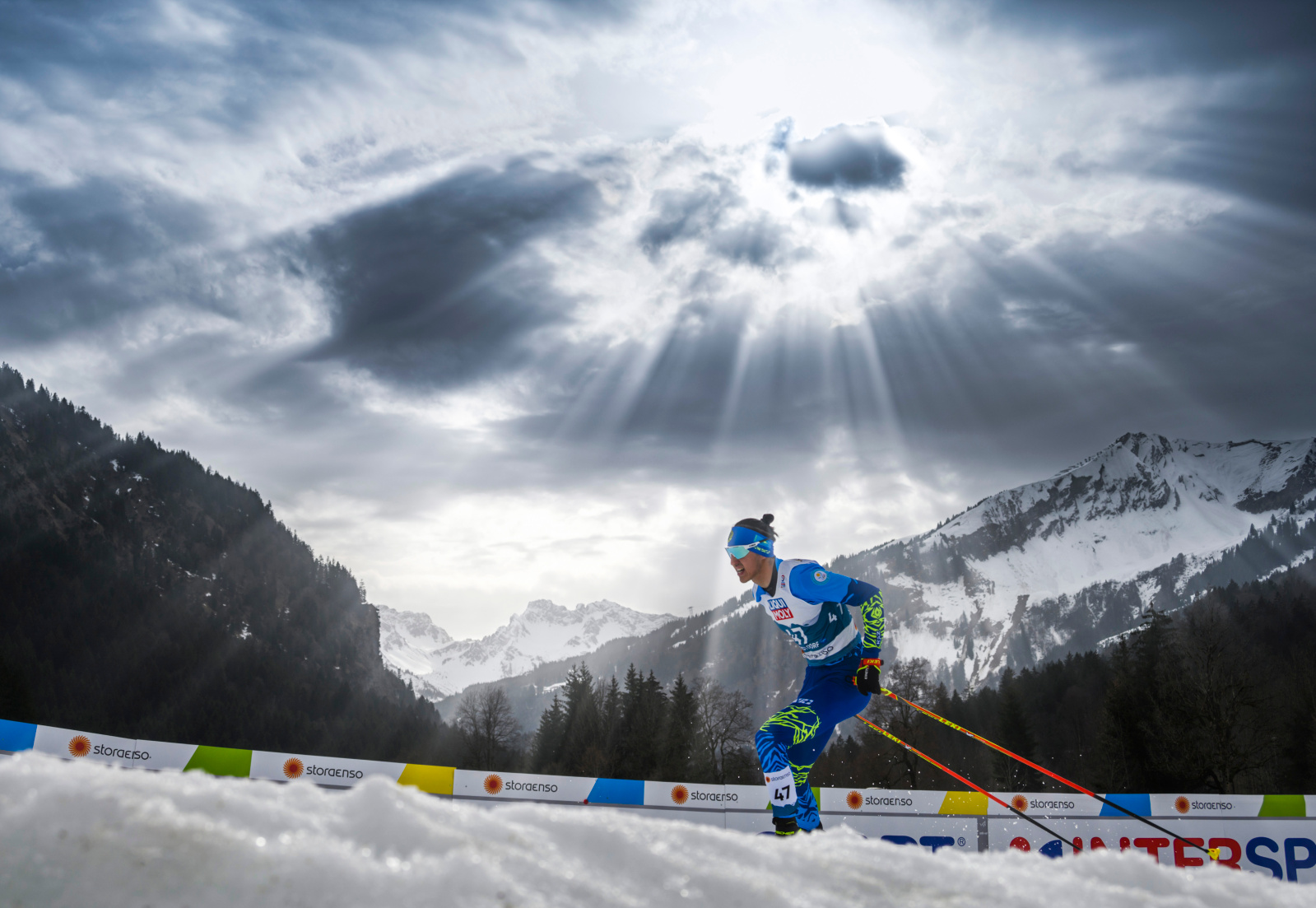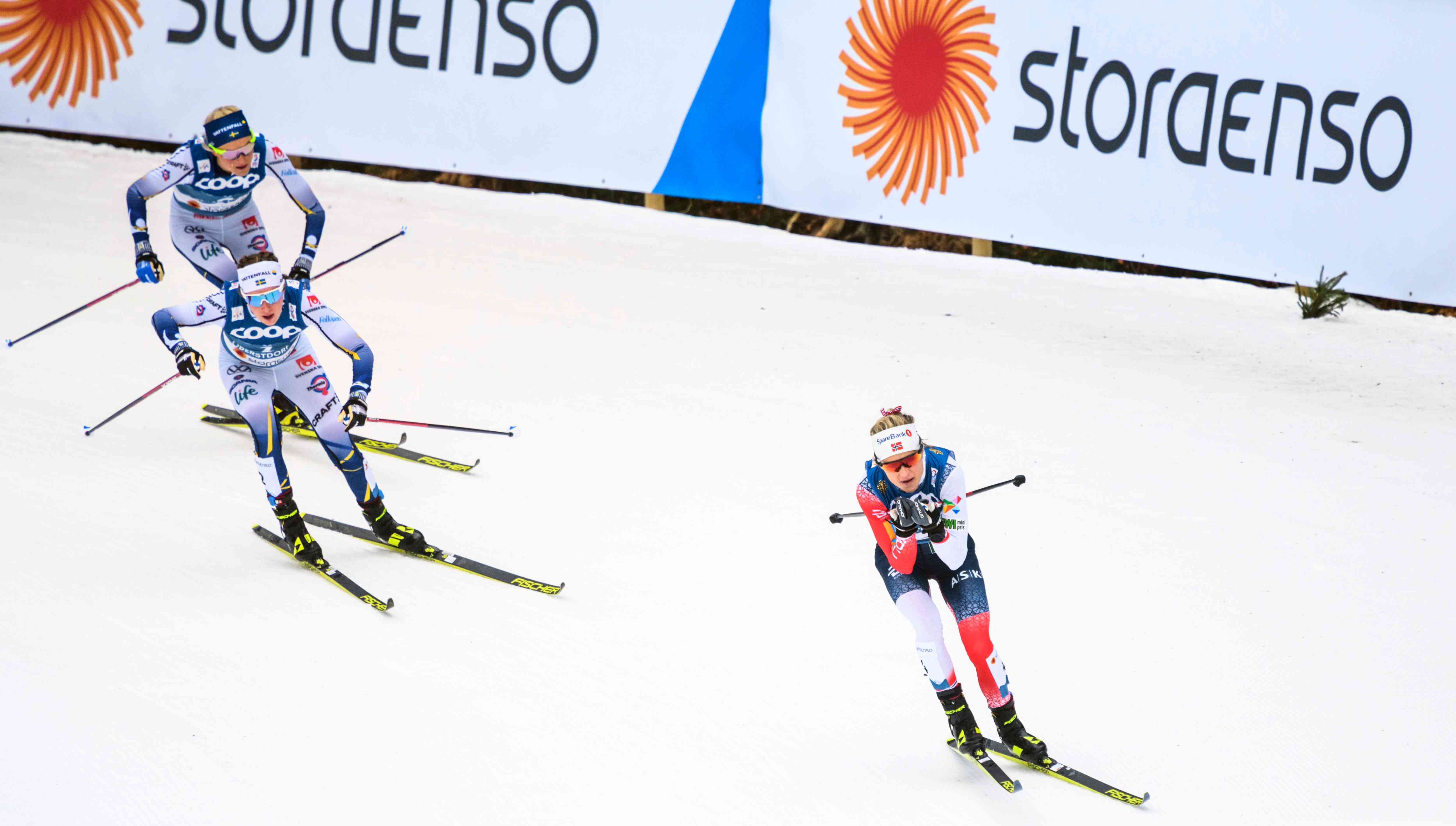The thrill and excitement of any event on snow – whether alpine skiing, freestyle or nordic – is not just reserved for the athletes and spectators on the slopes. Behind the scenes, there are numerous challenges that come with producing a broadcast of what can be a high-speed and dynamic sport.
From the harsh weather conditions to the technical demands of capturing the action, it takes a well-coordinated team to bring the spectacle to viewers at home. We'll explore the key challenges and how they are overcome to deliver an unforgettable broadcast experience.
Changing temperatures
The changing temperatures and conditions in any outdoor environment can pose a significant challenge for the production crew responsible for setting up and operating the broadcast equipment. For example, amongst the specific issue that can arise from changing temperatures is condensation in cameras as well as the danger of snow and water turning to ice and back again, which can cause significant problems in the broadcast area as well as create safety issues.
“We have incidents where a camera may have been setup in a certain position, but a sudden fall in temperature means it may now be difficult to reach,” says Daniela Calandra, Head of HB Project FIS World Ski Championships. “This can be through having to deal with more water or ice, both of which are not what you want too much of when doing a broadcast. This is where we need to be adaptable and ensure there are efficient communication channels between those responsible for camera placement and those running the event.”
Additionally, if the temperature warms up, the ice can quickly turn back into water, which can cause equipment to malfunction or get damaged.
To mitigate these risks, the production crew are given the proper equipment and safety gear, such as cleats or spikes to provide better traction on the ice. They must also be familiar with the area and its conditions and have contingency plans in place to quickly respond to any weather-related issues that may arise.
By being proactive and taking the necessary precautions, the crew can safely navigate the challenging conditions and deliver a high-quality broadcast, despite the unpredictable and rapidly changing temperatures.
Unpredictable weather
Mountain weather is known for its unpredictability, and this in itself is another factor when project managing an event on snow. It is not as structured as running a production at a stadium or arena as we know it from many other sports, where most of the equipment has a permanent home.
“Poor visibility, fog as well as strong wind are all things we always need to consider,” adds Daniela. “To combat this and guarantee athletes security and fair racing conditions, the start house is often lowered to the reserve position. Whilst the actual structure is relatively simple to construct and deconstruct, doing it on the side of a mountain in challenging conditions makes it more complex. It may only be 20 or 30 metres further down, but that has a knock-on effect for everything else. And it often needs to be done in a short time frame.”
It is the same for accessibility to the slope itself.
“We have guys standing on platforms up to four metres high for hours on end. We need to make sure that they can firstly get there safely, but also remain safe when up there. Safety is of the utmost importance.”
The layout of the 2023 FIS Alpine World Ski Championships, which took place in Courchevel-Méribel, France from 6 to 19 February 2023, doubled these factors.
“Traditionally you have two courses ending in one same Finish Area for Alpine skiing. However, this time they are two separate courses, so we need to take into account all factors twice, especially as they are about 15km apart.”
The crew must have a clear plan in place to ensure they can reach the location, regardless of the weather conditions.
Unpredictable weather can also disrupt the schedule of the event, causing delays or even the cancellation of races. The production team must be prepared to quickly adjust their plans and schedules to accommodate any weather-related disruptions.
Leaving nature undisturbed
Whilst the elements are one aspect to contend with, the other is the daily comings and goings of a mountain itself. It is not its own bubble, and the space has to be shared with residents, businesses and even smaller inhabitants.
“We had one incident at an event a few years ago where there was a specific frog species that was only native to a pond that was in close proximity to the course layout,” explains Daniela. “It sounds like such a small thing, but it was an aspect we had to consider when establishing the course route and, as a result, the broadcast as a whole to ensure this one type of frog was not disturbed.”
“Even now, the International Broadcast Centre (IBC) of the Alpine World Ski Championship has been built on a private field normally reserved for grazing , which means an extra layer needs to be added before placing down all the flooring in order to level and protect the grounds.”
Overall, producing a broadcast of an alpine skiing event requires careful planning and preparation, the ability to react and adapt to changing conditions in real-time and to “tread lightly” on the areas and spaces we use in order for the to return to normality once all is over.
“We arrive, take over an area of a resort, create an infrastructure and leave after two weeks. Despite this, it is vital that we try and respect where we wok, leaving as little impact and being as sustainable as possible.”



/Images-Logos/14022025_Website_Virtual%20Advertising.jpg)



/Images-Logos/10062025_Website_MCR.jpg)